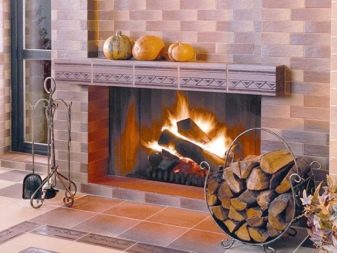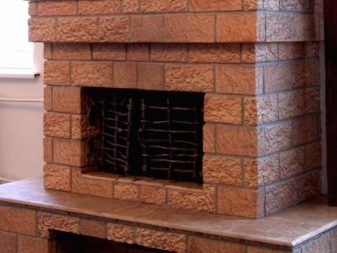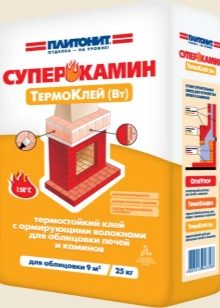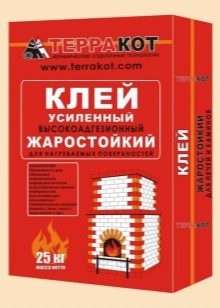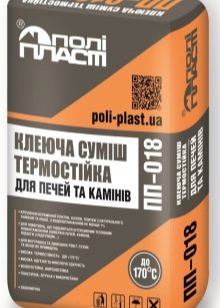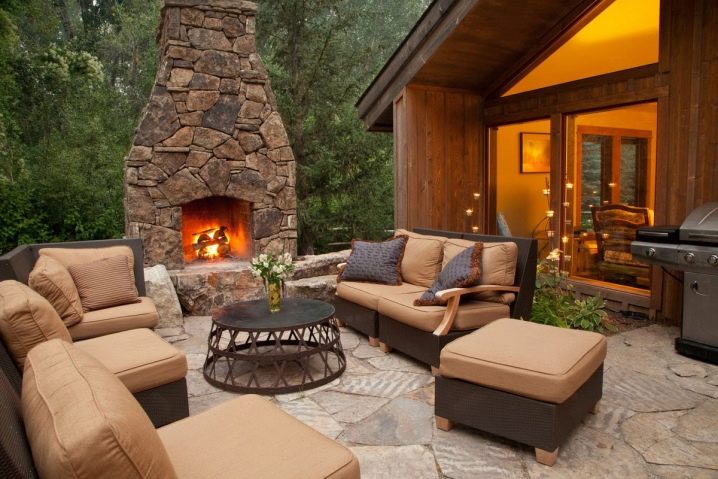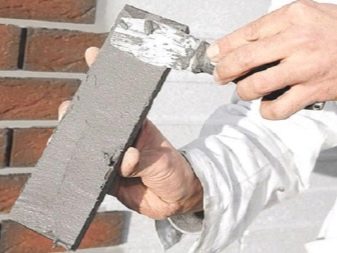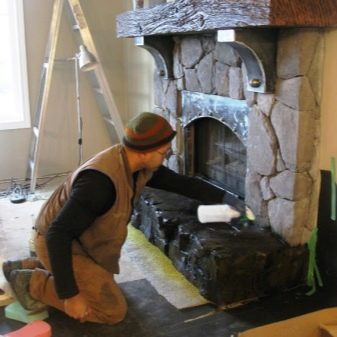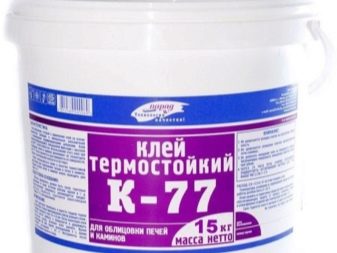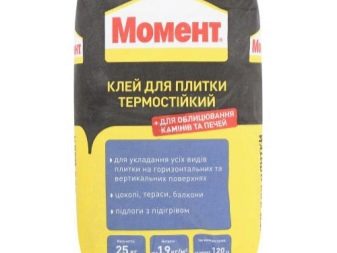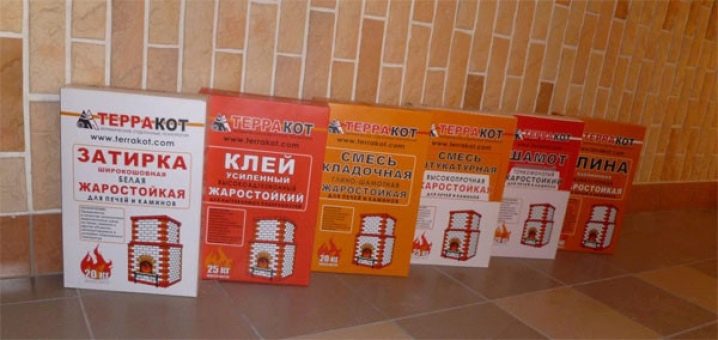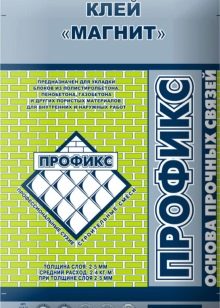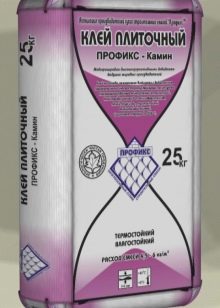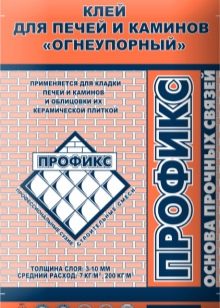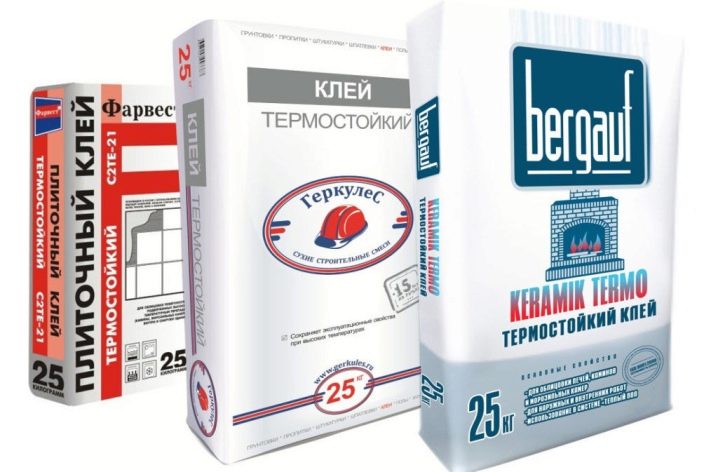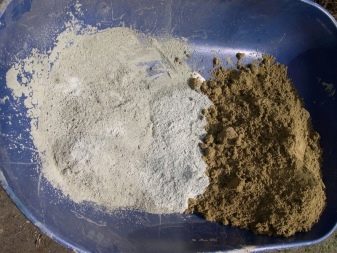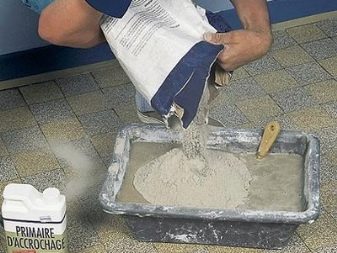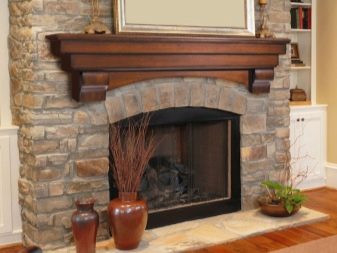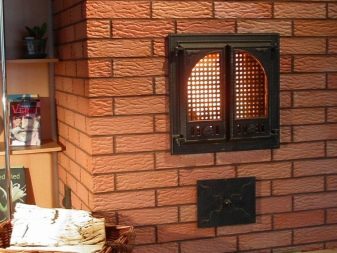Heat-resistant tile adhesive: features of choice
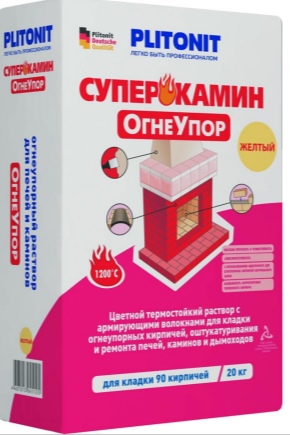
When facing modern stoves or fireplaces, ceramic tiles are often used. This is justified by its appearance, ease of use, reliability. Fixing the tile to the surface is made using a special heat-resistant glue.
Special features
Exposure to high temperatures leads to a change in the structure of materials, causing deformation, expansion. Therefore, when finishing heated structures using materials that are resistant to temperature changes. The refractory adhesive mixture used to fasten tiles to heating devices is easy to use. The special composition not only tightly connects the surface, but also provides reliable thermal protection, preventing the destruction of the structure.
The composition in the form of a paste is used in places of high humidity. Withstands up to 1100 degrees above zero and up to 50 degrees below zero.
Heat resistant glue is capable of withstanding heating of the material from 120 degrees above zero or up to 1500 degrees above zero for a short period of time for a long time.
The composition of heat-resistant glue may differ in the presence of certain components. It is produced, depending on the purpose and conditions of operation. Therefore, before choosing a tool, you must carefully examine all the characteristics.
Properties
In order to securely glue the tile to the outer surface, It is necessary to use glue that will possess:
- Heat resistant. Adhesive can withstand temperatures up to 750 degrees above zero for a long time or more than 1000 degrees for a short time.
- Good adhesion. Strong contact of surfaces will allow to reduce risk of deformations.
- High elasticity. Due to the high-temperature impact on the heat-resistant material, internal changes of the structural elements of the contacting surfaces in different directions occur.In order to smooth out these processes, heat-resistant glue must have sufficient elasticity.
- Resistant to temperature changes. This quality is especially valuable when the heater is located outside.
- Moisture resistant. The presence of this quality is important in conditions of high humidity, for example, if the heating mechanism is located in a bath or sauna.
- Eco-friendly. High temperature has a detrimental effect on many components of the refractory material. This can result in the release of toxic, environmentally hazardous substances.
Application
When facing a stove or fireplace with tiles, all work is carried out in several stages:
- Preparatory. The surface is thoroughly cleaned from dirt, dust, paint, remnants of building mixtures. Close up all the holes, irregularities. Then moistened with copious amounts of water. The tile is also aligned in size, then moistened with water.
- Tile mounting. If a dry mixture is used, it is prepared in advance according to the instructions indicated on the package. However, it should be borne in mind that after about an hour the solution loses viscosity, becomes unsuitable for use.
- Further, the adhesive composition is applied to the base. Layer thickness can reach up to 10 mm. It all depends on the brand of glue used. Put a small amount so that the substance does not have time to harden. Then proceed to laying the tile in a downward direction.
Further, the adhesive composition is applied to the base. Layer thickness can reach up to 10 mm. It all depends on the brand of glue used. Put a small amount so that the substance does not have time to harden. Then proceed to laying the tile in a downward direction.
To maintain the shape of the laid tiles, plates are installed in the gaps between the tile cubes.
The tiled surface is immediately leveled, and glue residues are quickly removed.
- Completion of work. After about four days after lining, produce grouting. The composition of the grout should also be heat resistant.
Safety regulations:
- The composition of the heat-resistant glue includes various synthetic chemical elements. So, when diluting a solution containing cement, alkali is formed. Contact with skin or mucous membranes can cause severe burn damage.
- When using a dry mixture in the air there is a high content of dust particles, fibers, grains of chemicals.Interacting with such substances it is necessary to observe safety rules:
- All work should be carried out in special rubber gloves. To protect the mucous membranes of the eyes, as well as the upper respiratory tract, a respirator and goggles are used.
- If a dangerous substance comes into contact with the skin or mucous membranes, they should be washed with copious amounts of water. If there are signs of a deep lesion, you should immediately seek the help of qualified professionals.
Types of formulations
The main components of any refractory glue are: sand, cement, fireclay fibers, minerals, additional synthetic components, for example, a plasticizer.
Heat resisting glue is issued in a look:
- Powder to be diluted with water. It consists of cement, plasticizer, heat-resistant artificial components. When preparing the solution, follow the instructions on the package.
- Ready to use emulsion. Solutions contain clay, quartz sand, artificial, mineral components. Such glue is spent more economically, however, its cost is much higher.
Depending on the predominance of one or another component, the properties of the compositions change. For example, the prevalence of chamotte fibers improves the properties of heat resistance. Plasticizers make the solution more plastic.
It should be remembered that the powder composition must be diluted in strictly the right amount immediately before starting work. Ready-made emulsions are more convenient, as they do not require preliminary preparation.
Brand Overview
Among the most famous brands of adhesive composition are the most popular:
- "Terracotta". Heat resistant glue is available in dry powder form. It consists of kaolin dust, viscous heat-resistant chemical elements. The substance has high adhesive properties, plasticity, resistance to high temperatures. Maintains temperatures up to 400 degrees above zero.
- "Profix". Glue comes in the form of a dry mix. The composition contains additives from the polymer. Possesses high plastic properties. In addition to heat-resistant characteristics, refractory glue has the property of rapid hardening, which significantly reduces the time of facing the surface. Maintains temperatures up to 700 degrees above zero.
- "Hercules". Universal heat-resistant glue can be used not only for tiling, but also for laying bricks. For a long time, it can withstand temperatures up to 750 degrees and up to 1200 degrees above zero for a short period of time.
How to cook with your own hands?
Refractory adhesive mixture can be prepared at home. This method is considered the most economical and does not pretend to a high aesthetic result.
This will require dry cement, sand, salt. In a ratio of 1 to 3 mix cement powder with sand. Then add a glass of salt.
The clay is diluted with water. Mix, bringing to a homogeneous mass. Next, add it to the dry mix. The adhesive solution is thoroughly stirred until a uniform consistency is obtained.
To do this, you can use any devices other than the mixer. As when whipping clay, foam is formed, deteriorating the quality of the adhesive mixture.
The advantages of this composition are low cost, the absence of toxic substances. However, when using a homemade solution, all proportions should be strictly observed. Such work requires certain knowledge and skills.
Tips for choosing:
- When choosing a heat-resistant adhesive composition should take into account the location of the heating device, operating conditions, load. With frequent changes in temperature, the load on the tile will be greater than with constant temperature mode.
- It is necessary to take into account such features as the type of material from which the stove or fireplace is made, the shape, the presence of irregularities. For example, the adhesive properties of ordinary bricks are higher than those of natural stone.
- Facing ceramics have a different density. When choosing a more dense tile material, glue must be selected with the highest adhesive properties.
- It is also important to take into account the presence of any additional effects on the heating element, for example, physical, the presence of vibrations, moisture.
- Before purchasing an adhesive, it is recommended that you carefully study the instructions for use, purpose, characteristics of the composition, date of issue. In the sealed package the glue is stored no more than a year.
Knowledge of the subtleties of the choice of material, first of all, is necessary for the specialist-stove. For a non-professional, they will help to orient in the work performed and correctly evaluate the final result.
Overview of glue for lining stoves and fireplaces, see the following video.
